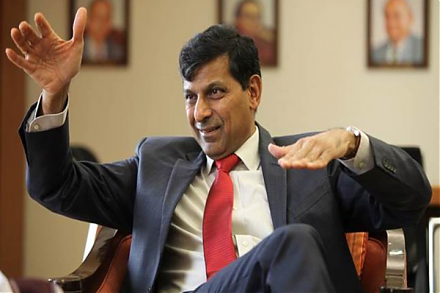

2023-05-07 10:27:00 Sun ET
treasury deficit debt covid-19 employment inflation interest rate macrofinance fiscal stimulus economic growth fiscal budget public finance treasury bond treasury yield sovereign debt sovereign wealth fund tax cuts government expenditures
William Easterly (2015)
The tyranny of experts: economists, dictators, and the forgotten rights of the poor
In addition to the prior elusive quest for economic growth, William Easterly provides a prescient critique of global economic development policies with a major focus on subject matter experts and state-led policies and goals. The tyranny of experts (or economists) often leads to the ignorance of bottom-up solutions such as high-tech advances and individual rights. With these bottom-up solutions, policy success can occur in spite of nation states. However, not all bottom-up solutions lead to policy success. The worst economic rare disasters can occur when states fail (as in civil violence). Easterly draws the essential conceptual nexus between economic policy success and individual freedom and opportunity.
Easterly applies the metaphor, the tyranny of experts, to refer to the fact that many experts often fail to design economic development policies in the broader business context. Easterly defines the tyranny of experts as the development community in the international financial institutions and several D.C. think tanks. Easterly further challenges the Washington consensus with a new wave of work in most economic development worldwide. The Easterly alternative view suggests that many experts cannot aim to solve global poverty. In this view, economists should strive to better understand how some countries, cohorts, and regions grow their per capita income in order to enrich the lives of both citizens and residents over time. Just as several well-known economists contribute to economic development policies at the World Bank and International Monetary Fund (e.g. Joseph Stiglitz, Simon Johnson, Ken Rogoff, Kaushik Basu, and so forth), Easterly frames his in-depth analysis with 3 major themes from the latest research in economic development. These 3 themes include the importance of global economic history; the strong role of non-national factors such as technological advances, values, and social network contacts; and the spontaneous nature of most bottom-up solutions to political, economic, social, and technological challenges. Within this broader framework, Easterly chooses to focus on individual rights. Easterly dismisses the conventional dichotomy between states and markets. Instead, he chooses to focus on the tension between individual rights and state power arrangements in influencing both open capitalist market and economic governance outcomes. In the key Easterly epic battle between individual rights and state choices, the worst-case scenario occurs when the external tyranny of experts dominates global economic development policies. In this scenario, these policies often cannot pass the democratic market tests of core economic outcomes. When push comes to shove, the basic law of inadvertent consequences counsels caution.
Easterly tells the top tale of Nobel Laureates and development economists Gunnar Myrdal and Friedrich Hayek. Myrdal and Hayek represent the polar extremes over the range of economic thought. Myrdal marshals the central state-led development with foreign aid. Meanwhile, Hayek emphasizes individual incentives and choices in the neoclassical synthesis. Easterly insists that Hayek cannot be as radical as many of his followers and supporters turn out to be in due course. Easterly focuses on Hayek and the important role of both individual incentives and rational choices in economic development policies. In summary, nation states often learn to better align economic development policies with individual rights and incentives such that most economic actors can make rational choices near the social optimum. Around this social optimum, the economic welfare deadweight loss approaches zero when key economic agents experience smaller marginal returns to scale in terms of both consumption and capital accumulation. A bit later Easterly shifts his focus from the fine distinction between state-driven power arrangements and individual incentives to the major Pareto efficient reforms and improvements. Pareto efficient outcomes can be an emergent property of free markets. In the complex adaptive systems of modern economies and societies, individual choices, incentives, preferences, and behaviors interact with the broader environmental, social, and governance (ESG) contexts. These key human interactions aggregate rational responses into socially desirable economic outcomes such as steady-state economic growth, employment, low and stable inflation, and asset market stabilization. This world view resonates well with people who compare economic development outcomes across countries. As melioristic realists, Easterly and Hayek prefer incremental economic reforms to sudden structural regime changes. Pareto efficient outcomes are less predictable but more socially acceptable over time.
In stark contrast, Myrdal offers the alternative blank slate world view that imposes top-down economic development policies regardless of individual rights, incentives, and opportunities. The Myrdal world view of authoritarian development defeats free market development by giving substantial power to key elite groups. These groups include humanitarians and political leaders in rich countries. The former often tend to care about world peace and prosperity but not about the basic human rights of the poor. Also, the latter entrench and consolidate power in economic governance in both rich and poor countries. In the Easterly criticism of top-down development, dictators, experts, and economists sometimes neglect the forgotten basic human rights of the poor (e.g. life, liberty, and the pursuit of happiness).
Easterly provides 3 main historical examples of Maoist China, Colombia, and post-colonial sub-Saharan Africa. In all of these cases, Easterly shines new light on the socially undesirable economic development results. Despite some initial conditions and domestic policy ideologies, the tyranny of experts affects the subsequent core trajectory of economic growth, employment, and capital accumulation etc. In each case, the economic development strategies arise from outside experts and then fit into the strategic priorities of external governments (i.e. America and Britain). This unforeseen combination can lead to not only inappropriate top-down development policies, but also oppressive economic regimes. These oppressive regimes cause inadvertent consequences and further severely compromise individual rights.
Alternatively, bottom-up solutions can contribute to a bright future. When individual efforts interact with commensurate incentives, this positive interaction often results in major economic and technological advances. Moreover, this interaction can lead to better social networks and public services, especially in health care, education, infrastructure, transportation, and information and communication technology (ICT) adoption, diffusion, and proliferation. In recent years, more pervasive ICT diffusion causes substantial productivity gains and disruptive innovations etc in e-commerce, mobile connectivity, software, online search, and social media. This latter measure has become one of the core quality-of-life indicators in most OECD countries.
Easterly delves into cross-country growth results in support of bottom-up economic development policies. In his prescient view, top-down development deals, regime changes, and even nation states cannot matter all that much. Instead, longer-term economic growth reflects fundamental factors such as endowment, innovation, or information communication technology (ICT) adoption, diffusion, and proliferation. From benevolent autocracies to Washington consensus development policies, the specific factors reflect only short-term changes in economic growth, employment, and capital accumulation. The real long-run fundamental factor relates to technical progress. In many ways, this long-term view complements the economic thesis of Daron Acemoglu and James Robinson. In a sequence of top-tier research articles, Acemoglu and Robinson focus on the long-term role of inclusive institutions versus extractive institutions in the colonial era. This landmark line of empirical research contrasts with the negative effects of geographic endowments on economic growth over time.
Daron Acemoglu, Simon Johnson, and James Robinson (2001 and 2002) present empirical analysis of the robust nexus between colonialism and subsequent poor social infrastructure (and thus subpar economic growth). In their institutional view, geographic differences between (sub)tropical and temperate areas at the time of colonization have caused Europeans to colonize with both extractive and inclusive institutions. The different strategies of colonization affect subsequent institutional development. For this reason, the chosen establishment of inclusive or extractive institutions serves as a crucial source of global differences in social infrastructure and economic growth nowadays.
Acemoglu, Johnson, and Robinson (2001) empirically emphasize the geographic disease environment. Europeans face extremely high mortality risks in key tropical areas (particularly from malaria and yellow fever), but the average death rates are substantially lower in temperate regions. In the tropical high-disease environments, European colonizers establish extractive states or authoritarian institutions in order to exploit natural resources from these colonies with little settlement and property protection. In the temperate low-disease environments, European colonizers tend to establish inclusive states or settler colonies with democratic rule of law.
Acemoglu, Johnson, and Robinson (2002) focus on the previous level of economic development on the eve of colonization. In key colonies with dense population and greater institutional development, it proves to be more attractive for Europeans to establish extractive states than inclusive states and settler colonies. This particular colonization strategy leads to the great reversal of fortune that the settler colonies with inclusive institutions tend to experience better economic growth and middle-class income stability (in stark contrast to extractive states). This key empirical fact prevails in the economic comparison of North America versus South America.
The prescient Easterly analysis suggests a major role for path-dependent inclusive institutions (in addition to individual rights, incentives, disruptive innovations, and decent regulatory systems). Spontaneous individual freedom cannot always alter path-dependent economic institutions. This rationale helps explain why the tyranny of experts often dominates development policies in many poor countries. Easterly highlights the paradox that average levels of quality of life do not seem to increase as many countries grow richer with higher income over time. The positive relation between per capita income and some quality-of-life indicator (such as health care and educational attainment etc) often results from short data time frames, business cycles, and short-term booms and busts. Long-term economic growth trajectories tend to reflect no clear causal effects on most quality-of-life indicators. Correlation cannot imply causation. For this reason, most macro economists avoid attributing any causal properties to the empirical analysis of short-term growth miracles.
Easterly makes a reasonable point about attributing too much credit to shorter-run changes in quality-of-life indicators such as child mortality and poverty reductions, knowledge spillovers, technological advances, and real wage enhancements etc. The broader insight fits into the Easterly focus on individual rights and incentives. In the absence of attractive job and business opportunities, individual citizens and residents would prefer to move somewhere else. Nation states continue to impose political constraints on free labor movements across international boundaries. This principle often proves to be counterproductive from the fundamental viewpoints of both economic efficiency and poverty eradication. Further, most respondents who intend to migrate in the next few years tend to be wealthier with better educational attainment and lower life satisfaction. These migrants often learn to be more critical of their current economic situations in light of greater high-skill social labor mobility in some other parts of the world. Their counterparts often turn out to be the cohorts of happy peasants. These happy peasants are the survey respondents who simply adapt to the long prevalent adversity in practice due to low expectations and more complacent personalities. On balance, technological progress serves as the major cause of longer-term economic growth, whereas, the tyranny of experts often tends to dominate Washington consensus development policies and regime changes.
Easterly criticizes the tyranny of experts because these experts often set the wrong myopic economic development goals such as enrollment targets and public health standards. At the same time, these experts inadvertently ignore the important and essential development goals and policies such as individual rights and incentives for better job security, upward social mobility, and life satisfaction etc. To the extent that both the World Bank and International Monetary Fund (IMF) focus on the main Millennium Development Goals (MDGs), the Washington consensus method tends to focus on evaluating economic inputs and immediate results. However, this focus often leads to the pervasive reluctance for both rich and poor countries to invest in longer-term programs such as efficient public finance management, monetary and fiscal stimulus, and economic output capacity utilization. For example, many states may find it much more difficult to achieve advances in educational quality when the experts set some easily met education benchmarks in the MDGs. The lack of better educational quality can eventually result in negative economic consequences such as high-skill labor shortages in health, governance, education, urban development, and technology etc.
Meanwhile, expert advice cannot always be the baseline result of either tyranny or arrogance, but of acute awareness among high-skill people that several solutions no longer need to be bottom up. Non-OECD countries can learn from the past main lessons and experiences of OECD countries in most economic development goals and policies. For instance, most non-OECD countries can use malaria medications, mosquito nets, polio vaccines, and so forth to treat specific infectious diseases for better health standards and enhancements. This key direct economic development requires no bottom-up solutions and therefore avoids the tyranny of experts. Some other proponents of these public health care enhancements include Angus Deaton, Jeffrey Sachs, and the Gates Foundation.
Deaton puts less weight on clean water and nutrition and much more on knowledge. Specifically, Deaton focuses on the gradual improvements in health knowledge of both disease control and prevention. This better health knowledge represents the greatest improvement in life expectancy. In the Deaton narrative story, no scientific advance is more important than the germ theory of disease. In practice, the germ theory of disease allows for the introduction of effective public health infrastructure, especially clean water, as well as other behavioral changes in both the control and prevention of infection. Several other vital pieces of health knowledge include cost-effective treatment regimens for dealing with high blood pressure and several other cardiovascular diseases, oral rehydration therapies for diarrhea, cholera, malaria, and yellow fever etc, and medical rehabilitation therapies for tobacco and alcohol overdoses in association with diabetes, tuberculosis, and cancer. The substantial gains in health knowledge often lead to the gradual synchronization of declines in mortality across both OECD and non-OECD countries that run at different stages of economic development.
The knowledge-driven model of health improvements therefore serves as a natural explanation for the temporal covariation between health and wealth. In light of this knowledge-driven model, Deaton understates the partial role of economic growth in producing the health knowledge that can be instrumental in saving lives in poor countries with cost-effective medications. Key economists who study technological progress would emphasize at least 2 other channels that permit income growth to produce better public health knowledge. These 2 channels include better scientific tools and new public health discoveries. For instance, the major scientific discovery of antibiotics such as penicillin turns out to be an enormous technological advance for medical doctors to treat numerous bacterial infections. In this positive light, the knowledge-driven model of generic public health improvements provides a natural explanation for the upward parallel shifts of the Preston curve, especially in recent decades when governments develop the public health infrastructure worldwide for spreading new medical advances from rich countries to poor countries. At least in its purest form, health knowledge can serve as a good explanation for recent cross-country differences in public health outcomes today.
Deaton offers the empirical evidence against the conventional wisdom that income growth tends to cause better public health conditions. Instead, Deaton emphasizes that it would be quite inexpensive for governments to adopt new medical advances and public health improvements in order to save lives in most poor countries. Many recent episodes of rapid health improvements often arise from good political will to address public health issues and problems instead of economic output expansion. These episodes emerge in Bolivia, China, Honduras, India, Nicaragua, Sri Lanka, and several sub-Saharan African countries.
As Easterly suggests in his thesis, free and open modern economies and societies empower key citizens and residents to better balance their basic human rights and incentives. In light of this delicate balance, public pressure for proper regulation of negative externalities can correct course in time. Just as most experts and states welcome disruptive innovations such as electric power plants, clean water supplies, electric cars with renewable energy, and social media networks etc, these experts and states strive to prevent negative externalities such as extreme environmental degradation, carbon emission, climate change, low job and life satisfaction, stress and anger, and so on. In this positive light, Easterly proposes that we move beyond a contest between states and markets to a major focus on the interactions between individual rights and incentives and the broader complex socioeconomic systems. It is further important for most experts to recognize that not everyone has the same capacity to exercise human rights in response to incentives due to path-dependent economic institutions. Easterly emphasizes the empirical comparison of North and South America that different development trajectories reflect different geographical disease rates among colonial settlers. In turn, the different institutional structures result in different degrees of state support for individual rights and incentives in the post-colonization era. In America and Canada, the British settlers import common law courts and precedents, free markets, democratic systems, and other inclusive institutions. By comparison, several South American colonies such as Chile, Peru, and Guatemala etc inherit the civil law systems and extractive institutions from the French and Spanish troops due to higher tropical disease rates. As a result, these extractive institutions force local citizens to adapt to the adverse agencies that fail to respect individual rights, incentives, rational choices, or market expectations.
With proper social opportunities, individual citizens and residents can shape their own destiny and then help one another. These economic actors need not be seen as just passive recipients of the welfare benefits of intricate economic development programs. In this context, Easterly issues a strong critique of the World Bank and IMF for turning a blind eye to building free markets and open democratic systems for strategic reasons. These inclusive institutions help respect individual rights and incentives in the long run. The amount of foreign aid that has gone to past nefarious regimes (through the World Bank and IMF) seems astronomical. The current open governance structure of these global financial institutions makes it quite impossible to address local governance issues in a cost-effective manner. This problem is part and parcel of what Easterly identifies as the tyranny of experts with few bottom-up solutions.
This analytic essay cannot constitute any form of financial advice, analyst opinion, recommendation, or endorsement. We refrain from engaging in financial advisory services, and we seek to offer our analytic insights into the latest economic trends, stock market topics, investment memes, personal finance tools, and other self-help inspirations. Our proprietary alpha investment algorithmic system helps enrich our AYA fintech network platform as a new social community for stock market investors: https://ayafintech.network.
We share and circulate these informative posts and essays with hyperlinks through our blogs, podcasts, emails, social media channels, and patent specifications. Our goal is to help promote better financial literacy, inclusion, and freedom of the global general public. While we make a conscious effort to optimize our global reach, this optimization retains our current focus on the American stock market.
This free ebook, AYA Analytica, shares new economic insights, investment memes, and stock portfolio strategies through both blog posts and patent specifications on our AYA fintech network platform. AYA fintech network platform is every investor's social toolkit for profitable investment management. We can help empower stock market investors through technology, education, and social integration.
We hope you enjoy the substantive content of this essay! AYA!
Andy Yeh
Chief Financial Architect (CFA) and Financial Risk Manager (FRM)
Brass Ring International Density Enterprise (BRIDE) ©
Do you find it difficult to beat the long-term average 11% stock market return?
It took us 20+ years to design a new profitable algorithmic asset investment model and its attendant proprietary software technology with fintech patent protection in 2+ years. AYA fintech network platform serves as everyone's first aid for his or her personal stock investment portfolio. Our proprietary software technology allows each investor to leverage fintech intelligence and information without exorbitant time commitment. Our dynamic conditional alpha analysis boosts the typical win rate from 70% to 90%+.
Our new alpha model empowers members to be a wiser stock market investor with profitable alpha signals! The proprietary quantitative analysis applies the collective wisdom of Warren Buffett, George Soros, Carl Icahn, Mark Cuban, Tony Robbins, and Nobel Laureates in finance such as Robert Engle, Eugene Fama, Lars Hansen, Robert Lucas, Robert Merton, Edward Prescott, Thomas Sargent, William Sharpe, Robert Shiller, and Christopher Sims.
Follow our Brass Ring Facebook to learn more about the latest financial news and fantastic stock investment ideas: http://www.facebook.com/brassring2013.
Follow AYA Analytica financial health memo (FHM) podcast channel on YouTube: https://www.youtube.com/channel/UCvntmnacYyCmVyQ-c_qjyyQ
Free signup for stock signals: https://ayafintech.network
Mission on profitable signals: https://ayafintech.network/mission.php
Model technical descriptions: https://ayafintech.network/model.php
Blog on stock alpha signals: https://ayafintech.network/blog.php
Freemium base pricing plans: https://ayafintech.network/freemium.php
Signup for periodic updates: https://ayafintech.network/signup.php
Login for freemium benefits: https://ayafintech.network/login.php
If any of our AYA Analytica financial health memos (FHM), blog posts, ebooks, newsletters, and notifications etc, or any other form of online content curation, involves potential copyright concerns, please feel free to contact us at service@ayafintech.network so that we can remove relevant content in response to any such request within a reasonable time frame.
2019-04-09 11:29:00 Tuesday ET

The U.S. Treasury yield curve inverts for the first time since the Global Financial Crisis. The key term spread between the 10-year and 3-month U.S. Treasur
2019-05-05 10:34:00 Sunday ET

Former Vice President Joe Biden enters the next U.S. presidential race with many moderate-to-progressive policy proposals. At the age of 76, Biden stands ou
2025-10-03 10:31:00 Friday ET

Stock Synopsis: With a new Python program, we use, adapt, apply, and leverage each of the mainstream Gemini Gen AI models to conduct this comprehensive fund
2019-08-01 11:33:00 Thursday ET

Many young and mid-career Americans fall into the financial distress trap in rural communities. A recent analysis of 25,800 zip codes for 99% of the U.S. po
2020-05-07 08:26:00 Thursday ET

Disruptive innovators often apply their 5 major pragmatic skills in new blue-ocean niche discovery and market share dominance. Jeff Dyer, Hal Gregersen,
2019-05-13 12:38:00 Monday ET

Brent crude oil prices spike to $70-$75 per barrel after the Trump administration stops waiving economic sanctions on Iranian oil exports. U.S. State Secret